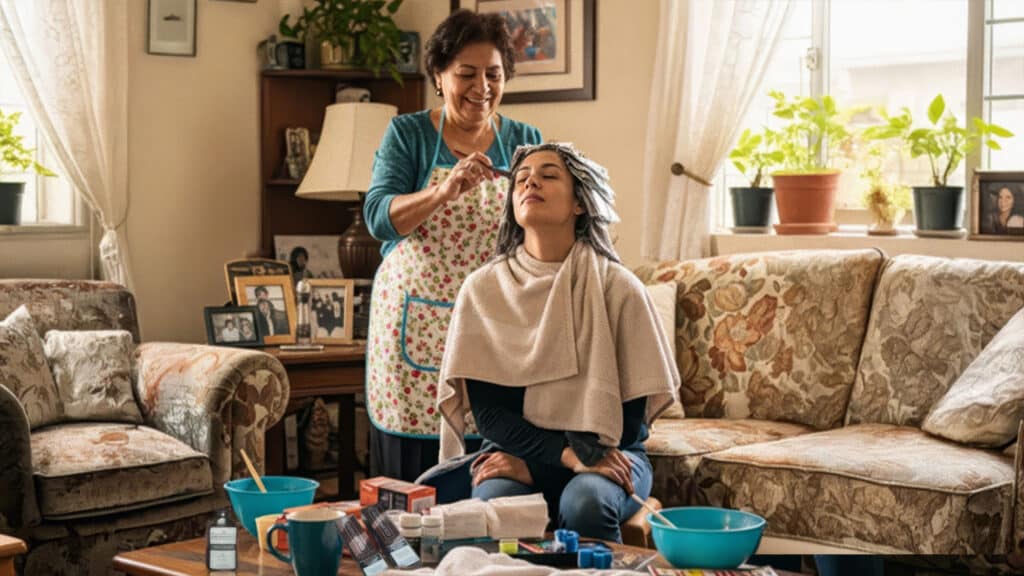Before TikTok Trends, Hoop Earrings Were Sacred to Our Abuelas—Here’s the Story They Never Teach You
They’re bold, beautiful, and always in style. But hoop earrings? They’ve also carried empires, gods, grandmothers, and entire identities in their shine.
If you grew up in a Latina household, odds are your ears were pierced before your first birthday, and your first pair of hoop earrings came soon after—tiny, golden, and gifted by someone who probably told you “para que te veas linda.” But the meaning behind this accessory goes far beyond beauty.
The legacy of hoop earrings traces back thousands of years, and their journey is anything but superficial. Worn by queens and warriors, appropriated by fashion’s gatekeepers, and reclaimed by mujeres everywhere, these circles have been through it all.
Let’s break it down.
Hoop earrings have been around for over 4,000 years—yes, really
The history of hoop earrings starts long before influencers and fashion week.
According to The Zoe Report, archaeologists have traced hoop earrings back to 2500 B.C.E. in Mesopotamia and Nubia (modern-day Sudan). In both ancient African and Sumerian societies, women adorned their ears with gold hoops—often as a symbol of status, power, or devotion to their gods. Roman carvings, Egyptian tombs, and Greek frescoes later confirmed that hoop earrings were beloved across continents.
Egyptians, in particular, believed gold represented the flesh of their gods. Their hoops weren’t just pretty—they were deeply spiritual. As Lili Coco notes, royals like Cleopatra and Nefertiti wore them as expressions of beauty, sexuality, and divine connection. Some were even buried with their earrings to preserve their beauty in the afterlife.
By the time trade routes expanded into Asia and the Americas, hoop earrings had already become a global accessory. In South Asia, intricate hoops became a central feature of temple jewelry. In the Americas, the Aztecs, Maya, and Incas also created jewelry that blended gold and silver with ritual, rank, and reverence, as reported by Altiplano.

Hoop earrings meant devotion, beauty, and rebellion
Across cultures, hoop earrings weren’t just decoration—they were a language.
In ancient Persia, carvings show soldiers wearing single hoops. Similarly, in Greece, the metal circle often included tiny pendants to honor gods like Hera or Zeus, according to Lili Coco. In Babylon and Egypt, hoops served as spiritual armor, protecting against evil spirits that entered the body through the ears, according to Business Insider México.
Centuries later, even pirates wore them—for surprisingly practical reasons. Gold hoops were sometimes used as “funeral insurance” in case their bodies washed ashore, Jewelry Auctioned explains. Meanwhile, in Indigenous Latin American societies, earrings—especially those made of jade or gold—were considered protective talismans meant to preserve spiritual well-being.
The stigma came later: when hoop earrings met colonization and classism
By the 1600s in Europe, hoop earrings fell out of fashion—literally hidden by high collars, heavy wigs, and the politics of respectability. According to Roma Designer Jewelry, elaborate hairstyles and restrictive clothing led to a sharp decline in the use of earrings altogether.
Fast-forward to colonial Latin America: gold jewelry, including hoops, was looted en masse by the Spanish. The Zoe Report highlights that gold earrings worn by Indigenous royalty—like Aztec and Inca leaders—were melted down and repurposed by colonizers.
In the U.S., stigma followed. By the early 20th century, wearing hoops was associated with Native and Latino identity. Some women stopped wearing earrings entirely, fearing they’d be seen as “unassimilated.” Others, like performer Josephine Baker, doubled down, rocking hoops on stage as an unapologetic expression of Black femininity and power.

Latina girls have always known: hoop earrings are a rite of passage
Ask any Latina, and you’ll hear a familiar story.
“My name-plated gold hoops gave me confidence,” wrote Raquel Reichard in her piece for WeAreMitú. Growing up in Orlando, Florida, she felt what many of us feel: that wearing hoops isn’t just a style choice—it’s protection, pride, and proof that we belong.
As The Zoe Report notes, for Latinas, hoop earrings are passed down like heirlooms. Nicole Acosta, the Mexican-American creator of the HOOPS Project, described the ritual: “We see our mothers, sisters, tías, and grandmothers adorning themselves with gold jewelry. Putting on gold hoops is a ritual — something passed down to us.”
In many Latinx cultures, pierced ears in infancy are a tradition. And as Current Boutique founder Carmen Lopez told The Zoe Report, “As babies mature, the hoops get bigger.”

The history of hoop earrings includes racism and resistance
Hoop earrings have long been policed by class and race.
In the ‘80s and ‘90s, they became central to the aesthetics of Chola and Chonga culture—bold, beautiful, and often mocked. While Latinas in working-class communities proudly wore bamboo door-knockers and nameplates, mainstream fashion labeled them “ghetto.” Think Sex and the City’s infamous “ghetto gold” line, or the countless school dress codes banning “large jewelry.”
And yet, we wore them anyway.
As reported by Refinery29 and The New York Times, many women of color internalized this stigma, choosing smaller hoops or avoiding them in professional settings. But the resurgence came loud and clear.
In 2016, Alegría Martínez painted “White girls, take off your hoops!!!” across a dorm wall at Pitzer College. Her point? As she told VICE, “Black and brown bodies who typically wear hooped earrings are typically viewed as ghetto and not taken seriously. But white [women] are allowed to appropriate the fashion when it is beneficial to them.”

AOC wore hoops in Congress—and made history in the process
Perhaps no modern moment better captured the power of hoop earrings than Rep. Alexandria Ocasio-Cortez’s swearing-in. She showed up in red lipstick and oversized gold hoops—“inspired by Sonia Sotomayor,” she wrote on X, after the Supreme Court Justice had been advised to wear neutral tones to avoid scrutiny.
“Next time someone tells Bronx girls to take off their hoops, they can just say they’re dressing like a Congresswoman.”
As Nicole Acosta told The Zoe Report, “Hoops help us feel protected … and are an act of resistance. They’re ancient but also the future.”




